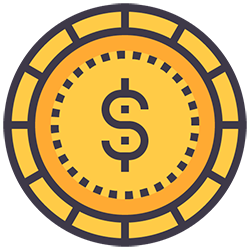Case Study: DataBrokerDao + Fitbit And Its 25 Million IoT Devices

A Fitbit is a wearable device that tracks user data including heart rate, the number of steps walked, and overall activity level. Together with the Fitbit app the dataset grows larger and includes eating habits, weight, and exercise plans.
The Fitbit data is used by individuals to gauge their fitness levels and built-in algorithms create exercise and sleep plans for the users. Data from each user is shared centrally with the system to allow the algorithms to become fine-tuned.
Over 25 million Fitbit devices are currently in use, collecting data from each of the individuals. Much of the data is very useful to researchers but it is currently siloed in the Fitbit databases after analysis.
In this scenario, we will examine a fictional partnership between Fitbit and DataBrokerDao, a blockchain based IoT sensor data marketplace.
Fitbit Data
With the partnership established Fitbit has begun offering customers the chance to opt-in to making their anonymous data available on the DataBrokerDao platform. If a Fitbit user opts into the data sharing they will receive DTX tokens whenever their data is purchased as part of a dataset.
Where Does The Data Go?
The Fitbit users conduct their daily routine as they normally would, walking, sitting, running, eating, and sleeping. Each time the user is within range of a Fitbit hub their data is collected. If the user opted into the program Fitbit then registers the data onto the DataBrokerDao registry.

The data registry will include demographic, geographic, and type of information provided but will be completely anonymized. For example, a data stream may state New York City, 27-year-old male, exercises daily, 180 lbs.
If a buyer is interested in this data stream they can purchase it with DTX tokens and 80% go to the Fitbit owner. The data stream is time-based and buyers will pay for streams daily, weekly, monthly, and even yearly.
The DataBrokerDao platform simplifies the process even more and allows buyers to package data streams into one. If a researcher is studying 35-year-old women in London with an average fitness level they will be able to purchase a set that includes all data streams fitting that profile.
The payments will be made accurately and without an intermediary using smart contracts to distribute DTX tokens as required.
When a buyer purchases the data it is sent through a gateway operator that is rewarded with 10% of the DTX tokens used. The gateway operators are an unseen stakeholder in the ecosystem but are responsible for bridging sensor owners and data buyers.
Who Would Buy This Data?
Collecting accurate data from a large number of individuals from specific categories is very difficult for researchers. Researchers would have instant access to over 25 million data streams for a fraction of the cost of normal data acquisition.

Purchasing data through DataBrokerDao would relieve researchers of the need to screen applicants, follow up on surveys, and manually enter data. It also allows researchers access to statistics from anywhere on the globe where IoT sensors are employed.
In this case study, the information is highly valuable to a number of parties including shoe companies, marketing teams, researchers, and transportation managers. In other cases, the data is valuable in the agriculture, finance, city infrastructure, and energy sectors.
What Happens To The Data?
The data can be purchased by either data buyers or data processors. Data buyers purchase raw data and can analyze it for their own use, package the data with additional data and resell it, or use it train AI neural networks.
Data processors would use the data to conduct an analysis which they then offer for sale on the DataBrokerDao network. A data processor might find that most women in London jog in the early evening and usually run for 45 minutes. This processed data could be important to a seller of arm reflectors who can use it to decide where to market their product.
Why Share Data?
It's true the Fitbit users are already receiving the full benefits of their device without offering data on the DataBrokerDao platform. However, sharing data will provide a small amount of revenue for owners of the devices.

Each time a users data stream is purchased they will receive 80% of the price of the purchase in DTX tokens. These tokens can be held or exchanged for other cryptocurrencies or cashed out to fiat.
What About Fitbit's Competitors?
One aspect of DataBrokerDao's platform that is not discussed enough is that sensor owners can conduct private sales and also restrict sales to whitelisted buyers.
In this fictional partnership, DataBrokerDao could create a whitelist of buyers to prevent the manufacturers of competing devices from accessing data that could aid in their products.
The Timeline
Although it seems like the technology to make this happen is already here it just is not quite ready. The mainnet release for DataBrokerDao is set to launch in Q2 2018 which is going to be followed closely by the integration of Gateway Operators.
By the 4th Quarter of 2018, the platform will be fully functional with whitelisting abilities and API integrations. The final step of the roadmap is in the first quart of 2019 and will feature enhancements to the data integrations and work will begin on integrating AI data flows and also data processing by the DataBrokerDao Alliance.
For More Information on DataBrokerDao
📅Token Sale Dates: Open until May 26
📈Token Ticker: DTX
Website || Whitepaper || ANN Thread || Telegram || Bounty
Keep Tabs On Me
Daily articles about cryptocurrency and blockchain based projects.
Steemit || Twitter || BitcoinTalk Profile

This could actually change the economy of FitBit pricing. People could be able to sell the data they gather and could eventually mitigate the price burden of the fitness bands.